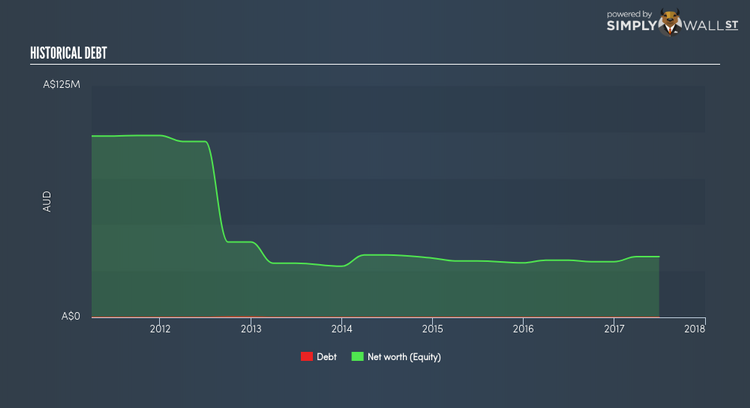Is KGL Resources Limited’s (ASX:KGL) Liquidity As Good As Its Solvency?

The direct benefit for KGL Resources Limited (ASX:KGL), which sports a zero-debt capital structure, to include debt in its capital structure is the reduced cost of capital. However, the trade-off is KGL will have to adhere to stricter debt covenants and have less financial flexibility. While zero-debt makes the due diligence for potential investors less nerve-racking, it poses a new question: how should they assess the financial strength of such companies? I will take you through a few basic checks to assess the financial health of companies with no debt. See our latest analysis for KGL Resources
Is KGL right in choosing financial flexibility over lower cost of capital?
Debt funding can be cheaper than issuing new equity due to lower interest cost on debt. But the downside of having debt in a company’s balance sheet is the debtholder’s higher claim on its assets in the case of liquidation, as well as stricter capital management requirements. Either KGL does not have access to cheap capital, or it may believe this trade-off is not worth it. This makes sense only if the company has a competitive edge and is growing fast off its equity capital. Opposite to the high growth we were expecting, KGL’s negative revenue growth of -46.74% hardly justifies opting for zero-debt. If the decline sustains, it may find it hard to raise debt at an acceptable cost.
Does KGL’s liquid assets cover its short-term commitments?
Since KGL Resources doesn’t have any debt on its balance sheet, it doesn’t have any solvency issues, which is a term used to describe the company’s ability to meet its long-term obligations. But another important aspect of financial health is liquidity: the company’s ability to meet short-term obligations, including payments to suppliers and employees. Looking at KGL’s most recent A$0.5M liabilities, it seems that the business has maintained a safe level of current assets to meet its obligations, with the current ratio last standing at 5.37x. However, anything above 3x is considered high and could mean that KGL has too much idle capital in low-earning investments.
Next Steps:
Given that KGL Resources is a relatively low-growth company, not taking advantage of lower cost debt may not be the best strategy. Shareholders should understand why the company isn’t opting for cheaper cost of capital to fund future growth, and whether the company needs financial flexibility at this point in time. This is only a rough assessment of financial health, and I’m sure KGL has company-specific issues impacting its capital structure decisions. I recommend you continue to research KGL Resources to get a more holistic view of the stock by looking at:
1. Future Outlook: What are well-informed industry analysts predicting for KGL’s future growth? Take a look at our free research report of analyst consensus for KGL’s outlook.
2. Historical Performance: What has KGL’s returns been like over the past? Go into more detail in the past track record analysis and take a look at the free visual representations of our analysis for more clarity.
3. Other High-Performing Stocks: Are there other stocks that provide better prospects with proven track records? Explore our free list of these great stocks here.
To help readers see pass the short term volatility of the financial market, we aim to bring you a long-term focused research analysis purely driven by fundamental data. Note that our analysis does not factor in the latest price sensitive company announcements.
The author is an independent contributor and at the time of publication had no position in the stocks mentioned.

